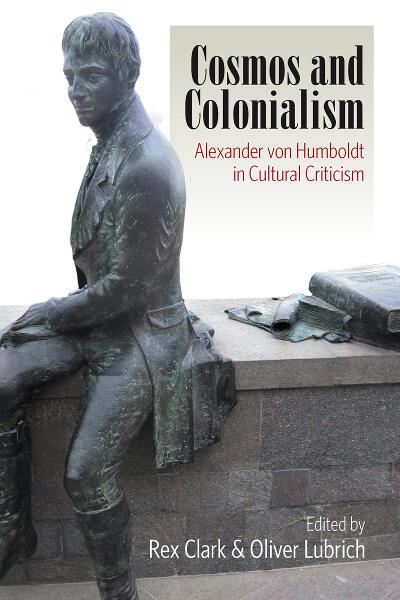
See Related
History JournalsEmail Newsletters
Sign up for our email newsletters to get customized updates on new Berghahn publications.
Constructing Charisma
Celebrity, Fame, and Power in Nineteenth-Century Europe
Edited by Edward Berenson and Eva Giloi
244 pages, bibliog., index
ISBN 978-1-84545-694-8 $135.00/£104.00 / Hb / Published (July 2010)
ISBN 978-0-85745-815-5 $34.95/£27.95 / Pb / Published (January 2013)
eISBN 978-1-84545-977-2 eBook
Reviews
“It is one of the key achievements of Edward Berenson and Eva Giloi’s lively volume to remind us that many of the mechanisms, phenomena and discussions readily associated with the present day date back to the 1800s –an age Leo Braudy calls ‘the first century of mass culture.’ The concept of ‘charisma’ –invariably presented with all the Weberian trimmings –is used here as an analytical leitmotif to provide the different contributions with an additional degree of coherence. What is more, the volume’s eponymous claim about the constructability of charisma is picked up very ingeniously in Braudy’s concluding observations, which deliver a thought-provoking punch line.” · European History Quarterly
“…a lively collection, with invaluable insights for scholars working on celebrity and celebrity culture.” · French Studies
“The conclusion by Braudy (himself a figure of some celebrity in the field of celebrity culture) does terrific work in reminding us of just how rich this collection is as a whole…By reminding us of the diverse intellectual achievements of our historical predecessors in dealing with fame and celebrity when it actually was new and unknowable, this collection is highly recommended.” · European Journal of Cultural Studies
“In revising and broadening Weber’s original definition of charisma, for example by considering its gendered construction, the editors and authors bring together a range of innovative interdisciplinary perspectives drawn from history, literary studies, art history, and musicology…These perspectives provide a valuable template for the study of individuals ‘known for their well-knownness,’ in Daniel J. Boorstin’s catchphrase, across cultures and historical eras into the present day, from Sarah Bernhardt to Lady Gaga.” · H-France Net
“…the collection offers a refreshing addition to celebrity studies scholarship for a variety of reasons, not the least of which is its European frame of reference. By focusing on Britain, France, and Germany, the book throws into relief the field’s overemphasis on the United States as the archetype of celebrity culture….[Its] greatest strength is the careful attention paid to the culture of the image and to visual performance throughout.” · Critical Quarterly
“This is a persuasive and timely collection. Celebrity and charisma are very much on the current research agenda. This volume deals with these issues in a serious, insightful manner, making an original contribution to what is now a rising field of study.” · Philip Nord, Princeton University
Description
Railroads, telegraphs, lithographs, photographs, and mass periodicals—the major technological advances of the 19th century seemed to diminish the space separating people from one another, creating new and apparently closer, albeit highly mediated, social relationships. Nowhere was this phenomenon more evident than in the relationship between celebrity and fan, leader and follower, the famous and the unknown. By mid-century, heroes and celebrities constituted a new and powerful social force, as innovations in print and visual media made it possible for ordinary people to identify with the famous; to feel they knew the hero, leader, or "star"; to imagine that public figures belonged to their private lives. This volume examines the origins and nature of modern mass media and the culture of celebrity and fame they helped to create. Crossing disciplines and national boundaries, the book focuses on arts celebrities (Sarah Bernhardt, Byron and Liszt); charismatic political figures (Napoleon and Wilhelm II); famous explorers (Stanley and Brazza); and celebrated fictional characters (Cyrano de Bergerac).
Edward Berenson is Professor of History and French Studies and Director of the Institute of French Studies at New York University. His numerous publications include The Trial of Madame Caillaux (University of California Press 1992), Heroes of Empire: Five Charismatic Men and Europe's Quest for Africa, (University of California Press 2010) and The Statue of Liberty: A Transatlantic Story (Yale University Press 2012).
Eva Giloi is Associate Professor in the History Department at Rutgers University, Newark. She is the author of Monarchy, Myth, and Material Culture in Germany 1750-1950 (Cambridge University Press 2011).


